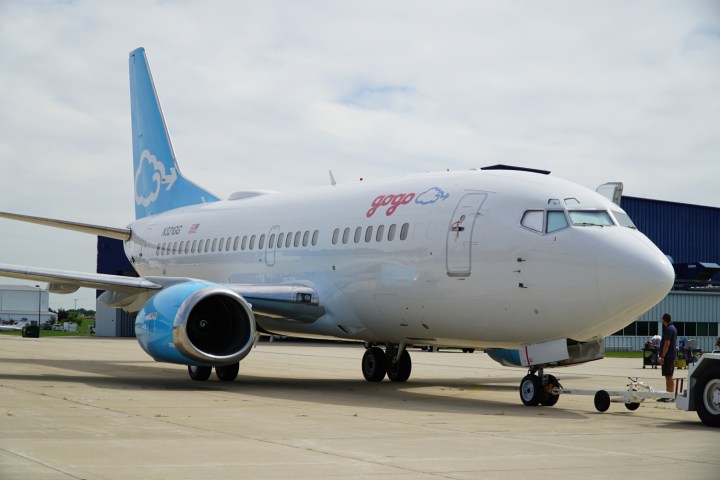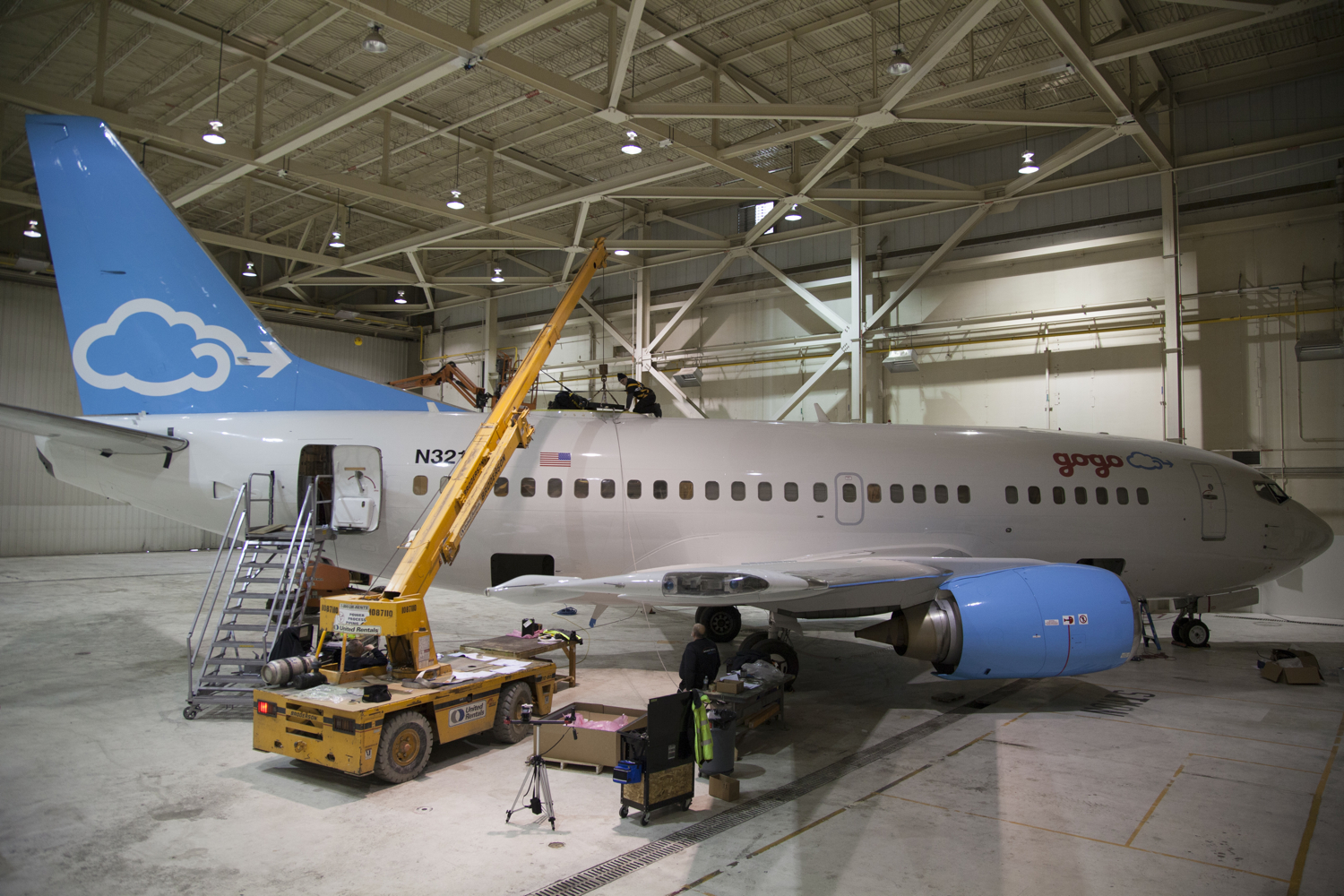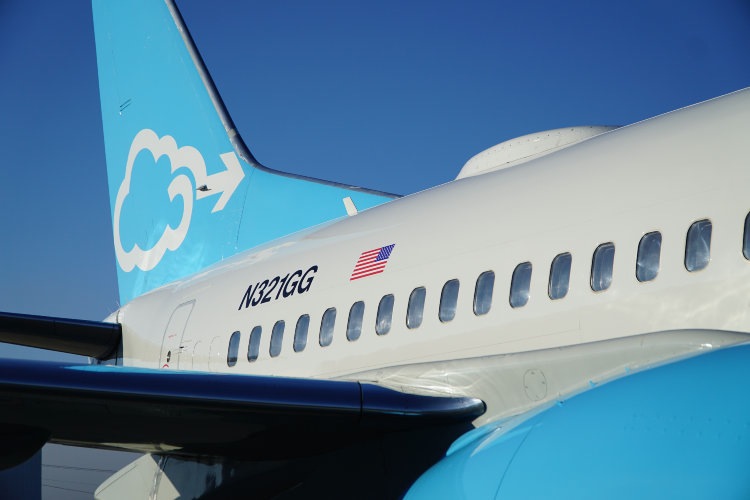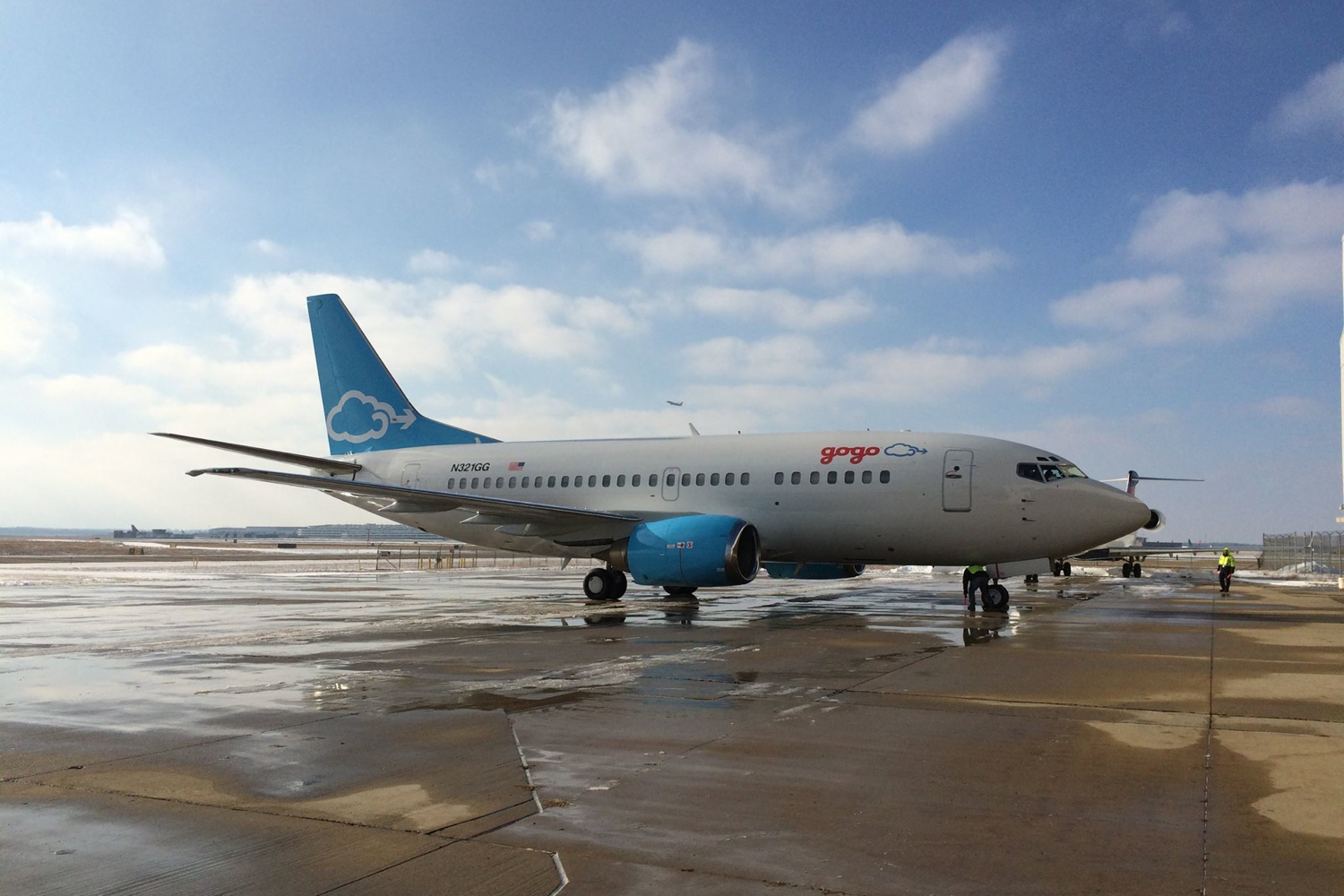
“Gogo has simultaneously streamed videos on more than 40 devices.”
Gogo unveiled the 2Ku service on the company’s own 737, which is fast enough to allow not only streaming, but multiple streams as well. (The Verge’s Chris Welch, who participated in one of the flight demonstrations, was able to stream Netflix, YouTube, and Spotify simultaneously.) Unlike Gogo’s air-to-ground (ATG-4) system, which communicates with land-based towers to achieve a theoretical max download speed of 9.8 megabits per second (Mbps), 2Ku, which uses more than 180 Ku-band satellites scattered around the world, can achieve a max speed of 70 Mbps (again, in theory). It’s also an improvement over existing Ku-based services. Planes equipped with 2Ku would use two antennas – one for download and another for upload – eliminating the need for ground equipment and providing service over water.
According to Gogo, “2Ku is capable of matching or exceeding the bandwidth of any other system currently offered. As part of the flight testing of 2Ku, Gogo has simultaneously streamed videos on more than 40 devices while providing a great browsing experience on additional devices.” But actual use-case speeds may differ, especially if you have a fully loaded plane and everyone wants to get online. As The Verge’s Welch notes, stability will be key to the experience.
While it isn’t as fast as what we’re used to in our homes, offices, or Starbucks, the new satellite-based systems will feel more robust than older ATG systems. Allowing passengers to stream content to their smart devices and computers has some advantages for airlines: It broadens the content available, and saves airlines money from having to license a lot of the content they provide in seatback entertainment systems. It also lets passengers choose the type of content they want to enjoy, whether it’s YouTube, Hulu, Netflix, or HBO Go, instead of just what the airline has on offer. Plus, as some airlines move to a BYOD, or bring your own device, model, it means not having to install inflight entertainment systems at all – another cost-savings measure, as well as a profit generator (onboard Wi-Fi isn’t free). But in order to do that, it requires faster Wi-Fi.
Since Gogo announced 2Ku, eight airlines, including Aeromexico, Delta, and Virgin Atlantic, have signed up. But retrofitting a plane with the necessary equipment takes time – a plane has to be taken out of service, which is lost profits for an airline, so you won’t see things happen overnight. And as Panasonic Avionics’ Neil James told us earlier this year, with the speed the airline industry moves at, by the time a technology is finally rolled out, something new and better will have come out.
And 2Ku won’t be the only option for airlines. High-speed inflight Wi-Fi was a big focus at the recent 2015 APEX Expo in Portland, Oregon: Our Drew Prindle, who attended the show, said there were many companies onsite exhibiting solutions for making Wi-Fi stronger, faster, and more reliable. For example, another satellite system, known as Ka-band from ViaSat, is claimed to be up to 10 times faster than current solutions. Virgin America, which not long ago finished rolling out Gogo’s ATG-4 service across its fleet, is now implementing ViaSat’s Ku/Ka hybrid system, allowing the plane to connect to both Ku and Ka satellites. The faster system allowed Virgin America to offer complimentary Netflix streaming. Gogo’s competitors, like Panasonic, Thales, Inmarsat, and Global Eagle Entertainment, are working on upgrading their equipment, while we’ll also see enhancements to both Ku and Ka satellites.
But one thing’s for sure: Inflight Wi-Fi will become a norm on future flights, and it’ll only get faster. The question is, how much would it end up costing, and if passengers would be willing to pay for it.






